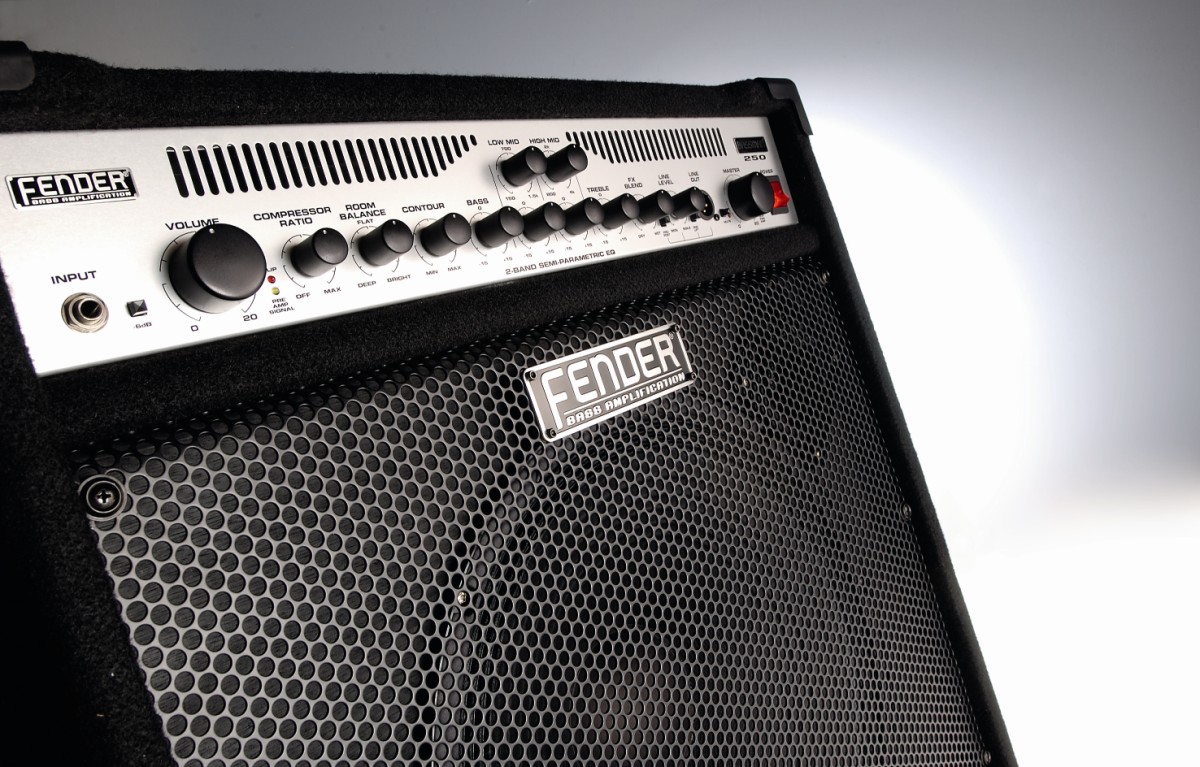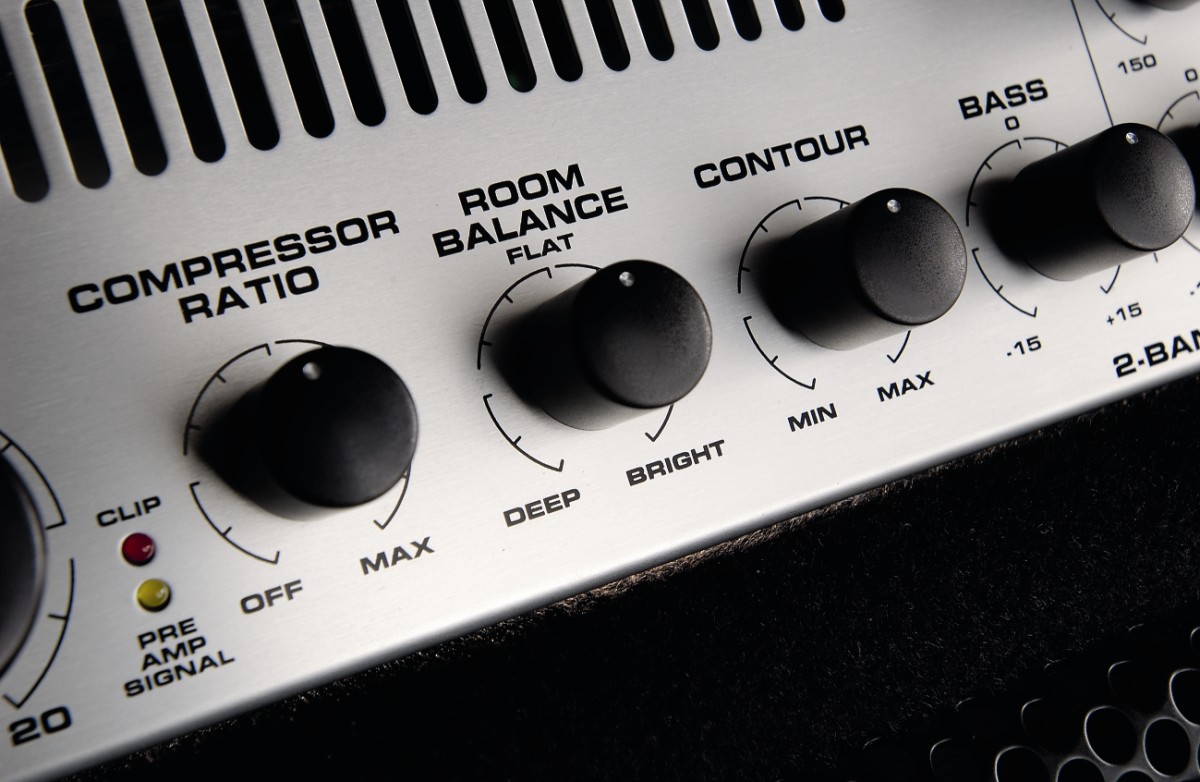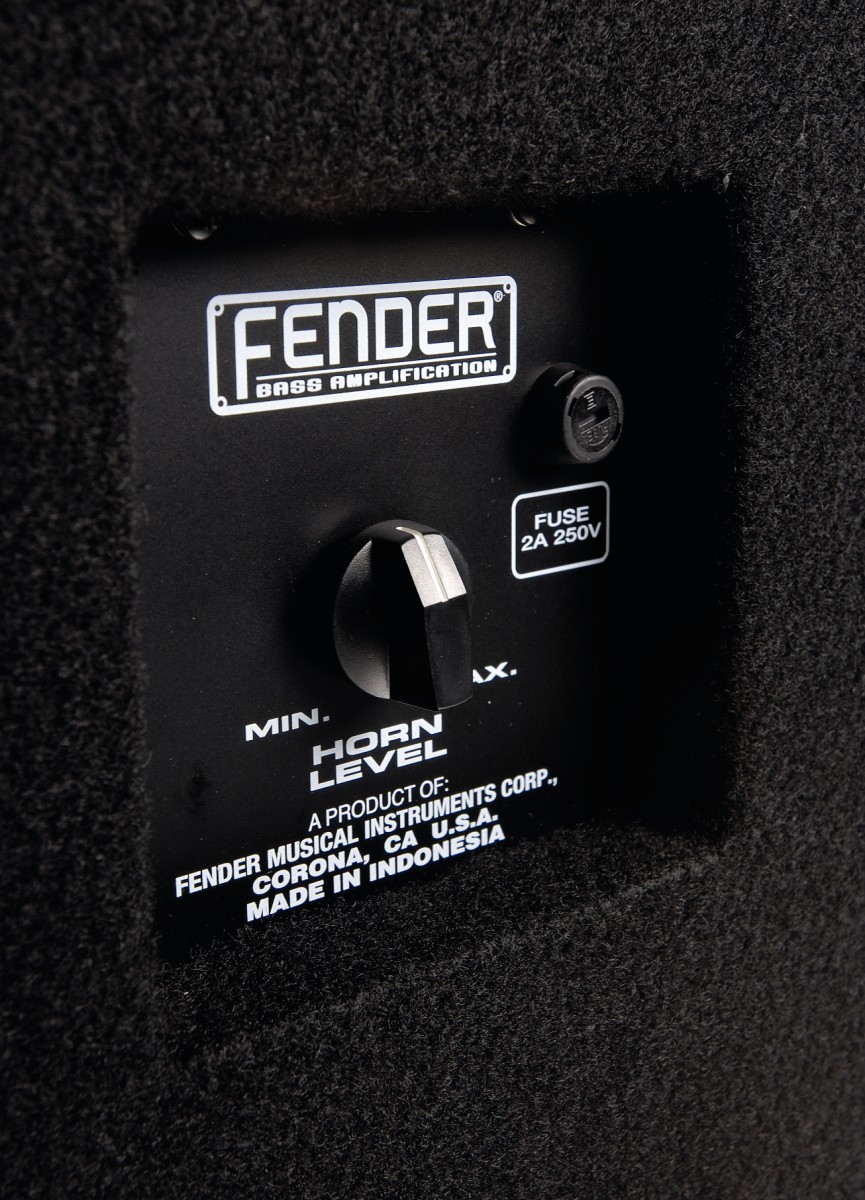MusicRadar Verdict
As a standalone unit this performs exceptionally well, but with the XLR DI connection it can handle a much wider variety of performance situations than its output potential may first suggest. We particularly like this 15-inch driver combination because the midrange is dynamic and so easy to focus. A high performance combo that retains the best of the classic Fender sounds, if not its classic design.
Pros
- +
Classic Fender bass sounds. Easily focused midrange.
Cons
- -
Compression could be more dynamic. Functional design.
MusicRadar's got your back




Fender originally introduced the Bassman combo in 1951 to service their newly released Precision Bass and, like the bass itself, they got a great deal of the design right from the outset. Its single 15-inch speaker was a winner and it looked impressive, too.
Yet, in spite of continually producing viable bass models in recent years, the company has focused significantly more on the guitar market rather than the development of bass amplification. Now, however, Fender has relaunched its bass models with a whole revamp of designs and ranges.
The new Bassman 15-inch bass combo has been upgraded with more power and is set at a price that sits comfortably between their new Rumble practice amps and the full-on Pro Series.
Overview
Sporting the original 'block-styled' Fender nameplate from the '50s, this somewhat angular design may seem less organic than some of those early classic models of the past - the clean lines are very contemporary.
The tough plywood cabinet features a front port slit beneath the speaker baffle and is covered in practical black carpet material with a protective metal grille.
By contrast, the control panel is brushed aluminium so it really stands out. The single input socket is supported by a volume control, pad switch and LED indicators to help achieve the optimum level from your bass whether power assisted or not.
Many bass combos today feature sliders for the EQ section but Fender have stuck to rotary controls. There's still plenty of tonal manipulation to hand though, particularly in the low and high semi-parametric midrange section with adjustments for both frequency and level.
In addition, there's a contour control providing a scooping effect to this midrange that will particularly appeal to the more percussive-styled players.
Bass and treble controls take care of the tonal extremes so this proves to be a very well equipped, sound-shaping combo with the Room Balance providing yet another option. Like the contour control, this is something like an EQ pre-shape as it totally alters the tone, but the emphasis is markedly different.
Compression is provided, and if you're using effects then the blend control will allow you to achieve the perfect balance between your clean and effected sound.
A balanced line XLR output on the front panel with an associated level control provides a send from the amp to a PA system. In addition, there are switches for pre/post tone circuit and a ground lift switch to alleviate any unwanted earth noise should it occur.
The mute switch, master volume and illuminating mains isolator wrap up the front panel leaving the back panel to house the various linking opportunities - tuner output, an effects loop and a headphone jack as well as an additional auxiliary input for playing along with tape or CD for rehearsal purposes.
The high-frequency horn is also provided with an attenuator so you can adjust the impact to suit your requirements. It seems that Fender have thought of just about everything you could want and with a healthy 250 watts of output, this is an extremely practical unit to use.
Although we felt the styling was a little on the bland side compared with the Bassman's earlier, original incarnation, the relatively lightweight design means that it's highly practical and easy to tote around for gigs.
Sounds
Arguably one of the best bass sounds ever is found by playing a Fender bass through a Fender amp. There's a sort of 'correctness' about it and, thankfully, that element still applies with this new Bassman.
It packs a very powerful punch and of course does much more than purely cater for the company's own instruments.
There's a cleanness to the overall sound here (always a highly desirable quality) and background noise is all but non-existent, even when the amp is idling on max power.
The midrange section is excellent for emphasising those attractive hollow sounds or adding some meat to the basic delivery. This provides the backbone from which the punch and power can project so there's loads of oomph to hand.
The top end provided by the treble control is gentle and smooth and never causes the sound to become brittle - even when pushed to the max - and it's at its most effective when using a pick rather than your fingers.
The Contour control offers a gentle sweep from treble to bass emphasis and can be used to heighten individual notes or to allow the harmonic frequencies to shine.
The centre- detente on the room balance offers a good positional reference point for this curious control; it can help correct venue sound deficiencies as it has plenty of muscle and there's some serious sub-bass to be found here, too.
This is a useful and extremely dynamic addition. As the compression is set at a fixed threshold, all you're really adjusting is the degree of attack.
Compared to other combos it seems overly subtle and only useful for avoiding peaks in your playing so, like the treble control, it's most effective when using a pick. Also, when adjusting it's easy to turn that large volume control accidentally.
“This update reflects everything we believe modern gear should be”: Neural DSP gives the Nano Cortex an almighty power-up with free NanOS 2.0.0 system update
“It’s honestly got me thinking hard about adding one to my own studio set up”: Two Notes Reload II review
“Gloriously adorned with a gold edge burst finish over a gold paisley and sparkle top”: Gretsch unveils the Paisley Penguin – a rare bird that growls – and the Honey Dipper Special, a resonator for all your roots rock manoeuvres









